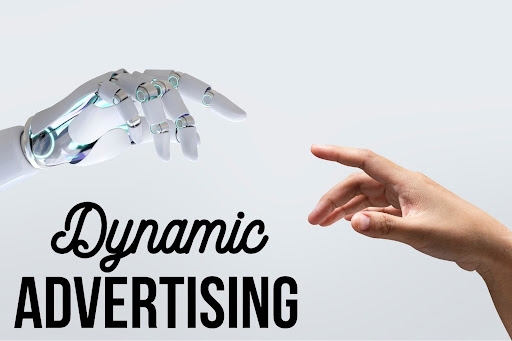Have you noticed? Ads no longer obey us. We’re still in charge, of course, but it seems like ads have become more independent than ever before. And they have, indeed. Since October 23rd, 22 years ago, we’ve been watching digital advertising grow like a child. Time has passed and we’ve come to a point where it is no longer a child, but more like a young adult, capable of making lots of sophisticated decisions. Are we ready to give it this freedom? To answer this, we’ll have to take a trip back in time.
Let’s take a deep dive into the history of advertising to discover how it‘s developed to become dynamic and how we can coexist with these changes.
Advertising in the Early Years
Before we can get into dynamic ads, we should retrace the steps that advertising took to become dynamic. In the beginning, before Facebook, Pinterest or Tiktok, there were only search engines.
They worked as simply as you would imagine. People were paying Google to promote their products or services by placing images or gifs on the right side of the search results page. You were charged based on how much you wanted to pay for a thousand impressions. This bid ranked your ads respectively between, above, or below other bidders.
In a short time, Google has learned how to track clicks and has switched to the traditional pay-per-click model we all know and love. Later, they learned conversion tracking, and this was the first step toward the dynamic world we have now.

School Time
Conversion tracking was meant for us to have direct reporting that would give a clear picture of campaign performance. Indeed, direct reporting did emerge from the advent of conversion tracking, but that’s not all. Before conversion tracking, the user would determine which keyword they wanted to bid on. This is still true, but this event opened the door to algorithmic optimization.
Once a valuable event like a purchase or lead form submission started to be tracked by Google and directly fed to AdWords, the system became more sophisticated and was able to learn. These systems, like Google Adwords, already know which campaign/ad group/ad/keyword is bringing you what you want, why it wouldn’t make its own bidding decision based on that data. The same decision a user might make on their own, but quickly, algorithmically, faultlessly.
It took ages for Google to convince marketers around the world that algorithms are as efficient as marketers. You might be surprised to learn that there are still people who do things the old-fashioned way – manually. Anti-algorithmists still don’t let Google automate for them, and they are certainly entitled to that right. Some people really like to be in charge, don’t they?
“Teenage” Years
Let’s take a step away from advertising for a moment and talk about cars. Both are tools designed to deal with certain issues. One is created to deliver us from place to place, the other is created to deliver people to the places we as advertisers want them to go 😉. But let’s get back to the point.
Cars have also transitioned – and not so long ago – from the manual gearbox to automatic. People were unhappy about it and some of them still are. That has not stopped the progress, though, and even more, cars now have an automatic gearbox as a standard feature. It’s now hard to get one with a manual gearbox, even within the sports segment.
I do believe that driving a manual transmission car can be really exciting and gives you more control over the car. But even so, automatic transmission cars are just more convenient to drive, less stressful and you are indeed more focused on the road ahead of you.
That said, this isn’t the only thing that has changed. We are now moving to a one-pedal driving system that has been introduced alongside the advent of electric cars. Not to mention the other things we’ve gained by bowing down to the god of convenience (automation): automatic windows, autopilot, backup cameras, anti-lock brakes, power steering, and myriad other safety features.
Would you just look at that? Why are we so stubborn about certain things making the transition to being automated and not with others? This seems pretty subjective, don’t you think? Or would you like to go back in time, when there was far less technology to contend with? How far back? Get in touch — we’d love to chat!
But let’s get back to the ads!

Young Adulthood
Over the last 3 to 5 years, more and more advertising platforms have started a slow transition towards a wholly dynamic advertising experience. Automated bidding systems are consistently suggested by any modern advertising platform (or even provided as the sole choice), just like with cars. That’s not the only thing sacrificed to automation, though.
Advertisers who have had their hands freed thanks to automation have started to experiment with ads more often. We’ve tried several advertising variations like changing headlines, images, descriptions, etc. This allows for many iterations of ads to be created with only small differences to swarm our advertising accounts which isn’t very helpful, easy to manage, or keep track of. There should be a point where, just like with manual bidding, manual advertising testing will be sacrificed to the god of convenience too – and that’s what’s happening right now.
For over a year, Google has increasingly suggested dynamic ads, as the main way of advertising for Google Search Ads. It lets us write several headlines and several descriptions, which are going to be later combined with each other, tested, and then algorithms will decide on their own which combination works best. Facebook has recently jumped on this trend too.
In highly trackable environments, such as apps, Facebook or Google Search Network, there are no reasons to resort to manual testing. Algorithms can do that much quicker. This also works with highly untrackable environments, which may be surprising.
After the iOS 14.5 update, advertising platforms across the board are facing the obstacle of more devices being protected from direct tracking. To combat that, all the biggest advertising platforms have an algorithmic attribution model, which is trying to match certain ad clicks with conversions based on mathematical formulas. It can’t give you exact data about which headline, image and description variation has driven a particular purchase, but it can spread the budget depending on the algorithmic effectiveness proportion of your ads.
We can’t object to that! Advertising has become even more self-sufficient while still being extremely efficient.

To Infinity and Beyond
And here we are, facing another automation transition. Do we all like it? No. Do we all have to live with it? Unfortunately, yes – but let me explain. While changes are not always a thing we all love and get excited for, we are inevitably facing them due to basic human progress. Changes, evolution, and growth are a core part of our lives and we face it in every area of our lives. Does it feel good? Not always. Is it good? Probably, yes. You see, any change is usually a reaction to something that was causing a problem. This means that every change gets us a step further into a world we can all enjoy living in.
But, let’s get back to the dynamic nature of ads. Do algorithmically combined ads always make sense? No. Do they always look good? No. The one thing they always do though? They work. They always do their best to help you reach the goals that you’ve defined.
You may find this comparison far-fetched, but I think of ads as a 22-year-old person. Digital advertising became a young adult capable of making its own decisions and thirsting for long-awaited freedom. You can no longer control his or her behavior completely. And you’re no longer required to!
Hope you enjoyed our ride. See you in the next article 👋

